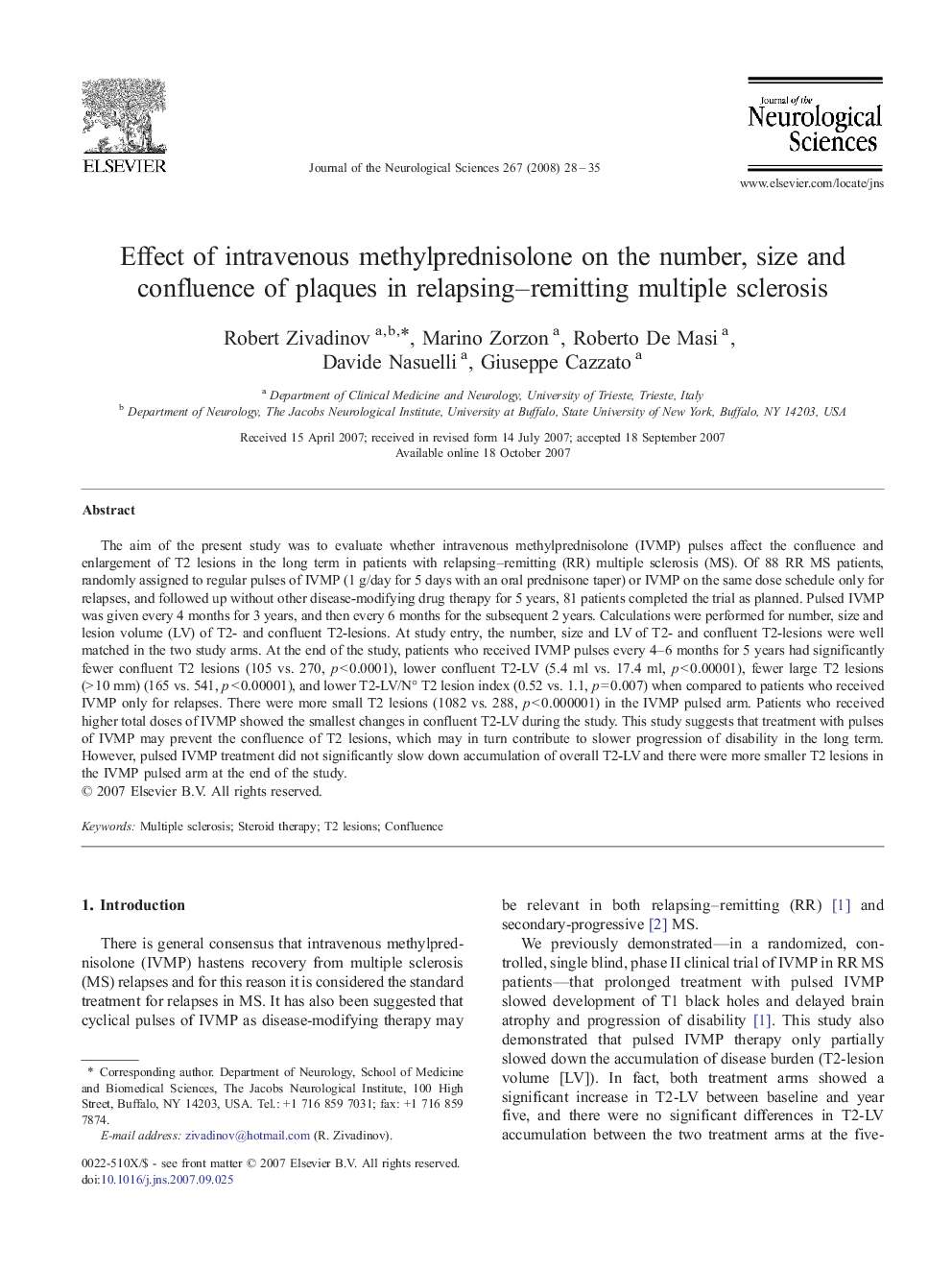| Article ID | Journal | Published Year | Pages | File Type |
|---|---|---|---|---|
| 1915823 | Journal of the Neurological Sciences | 2008 | 8 Pages |
The aim of the present study was to evaluate whether intravenous methylprednisolone (IVMP) pulses affect the confluence and enlargement of T2 lesions in the long term in patients with relapsing–remitting (RR) multiple sclerosis (MS). Of 88 RR MS patients, randomly assigned to regular pulses of IVMP (1 g/day for 5 days with an oral prednisone taper) or IVMP on the same dose schedule only for relapses, and followed up without other disease-modifying drug therapy for 5 years, 81 patients completed the trial as planned. Pulsed IVMP was given every 4 months for 3 years, and then every 6 months for the subsequent 2 years. Calculations were performed for number, size and lesion volume (LV) of T2- and confluent T2-lesions. At study entry, the number, size and LV of T2- and confluent T2-lesions were well matched in the two study arms. At the end of the study, patients who received IVMP pulses every 4–6 months for 5 years had significantly fewer confluent T2 lesions (105 vs. 270, p < 0.0001), lower confluent T2-LV (5.4 ml vs. 17.4 ml, p < 0.00001), fewer large T2 lesions (> 10 mm) (165 vs. 541, p < 0.00001), and lower T2-LV/N° T2 lesion index (0.52 vs. 1.1, p = 0.007) when compared to patients who received IVMP only for relapses. There were more small T2 lesions (1082 vs. 288, p < 0.000001) in the IVMP pulsed arm. Patients who received higher total doses of IVMP showed the smallest changes in confluent T2-LV during the study. This study suggests that treatment with pulses of IVMP may prevent the confluence of T2 lesions, which may in turn contribute to slower progression of disability in the long term. However, pulsed IVMP treatment did not significantly slow down accumulation of overall T2-LV and there were more smaller T2 lesions in the IVMP pulsed arm at the end of the study.
